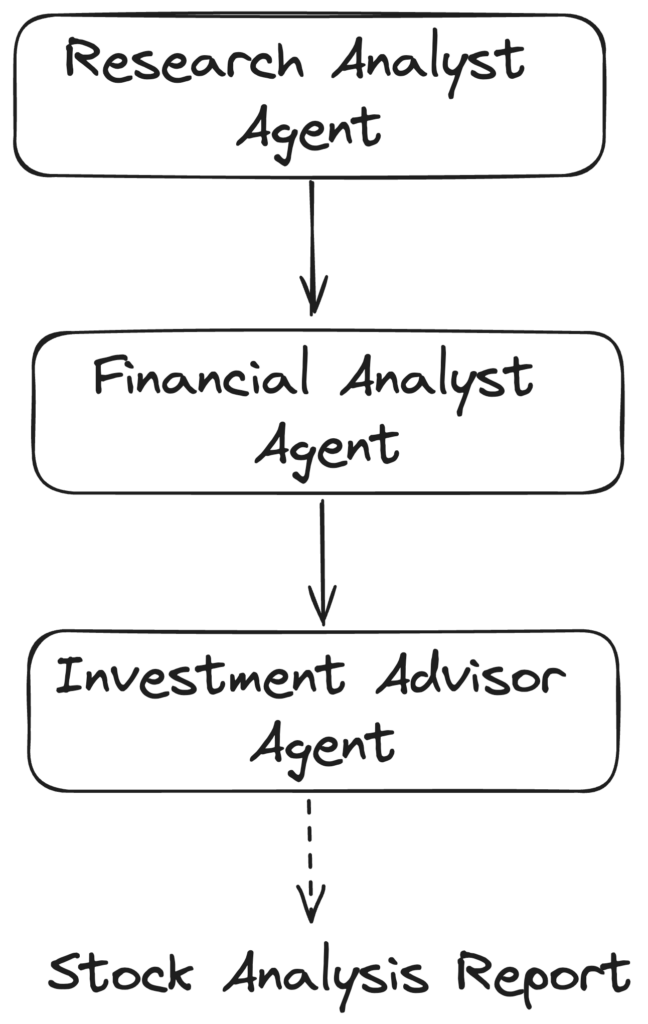Security and privacy are essential when using AI platform for stock prediction and analysis, as they often handle sensitive financial information and personal information. In the event of a breach, or misuse of data, it could result in significant financial losses as well as reputational damage. Here are 10 guidelines on how you can evaluate the security and privacy features of these platforms.
1. Evaluation of Data Security
Encryption during transit: Verify that your platform is using encryption protocols that are secure, like TLS/SSL, to protect any data exchanged between the servers on your device and the server of the other.
Verify the encryption at rest. Check to see if sensitive data is encrypted by the platform's servers using strong encryption standards (e.g. AES-128).
End-to-end encryption: Find out if the platform offers end-to-end encryption for sensitive communications or data.
2. Review Authentication Methods
Double-factor authentication (copyright). Make sure the platform you are using has support for copyright. This will add another layer of security.
Biometric authentication: Verify if your platform has biometric login for mobile apps (e.g. fingerprint or facial recognition).
Password policies. Verify that the platform has strong password policies (e.g. minimum length and the requirement for complexity).
3. Check for Compliance
Financial regulations: Make sure the platform complies with relevant financial laws (e.g., SEC, FINRA, MiFID II).
Data protection laws: Check for the compliance of your data privacy laws (e.g., GDPR, CCPA) If you're or trade with regions which are covered by these laws.
Audit certifications - Verify to determine if the platform is accredited or has been subject to external security audits (e.g. SOC 2, ISO 27001).
4. Review the Data Access Controls
Role-Based Access: Confirm that the application uses role-based-access controls (RBAC) to restrict access to data only to those who are authorized.
Check if you have the ability to establish different levels of access for teams or users.
Activity monitoring: Check whether the platform tracks and monitors user activities for suspicious behavior.
5. Evaluate the Management of Vulnerability
Regular updates: Ensure that the platform regularly updates its software to fix any weaknesses.
Verify that the platform is routinely subjected for penetration testing in order to find security weaknesses and correct them.
Programs for bug bounty: Check whether there is a bug bounty program on the platform to motivate security researchers from other sources to share security vulnerabilities.
6. Evaluate Data Privacy Policies
Transparency - Read the privacy policy of the platform to understand the ways in which data is shared, collected, and used.
Data reduction: Only collect information necessary to support the functionality of the platform.
Third-party sharing : Verify the platform's data sharing policies and conditions.
7. Check for Secure API Use
API security. It is important to ensure APIs utilize secure authentication techniques (e.g. OAuth keys, API keys), and that data is encrypted.
Limiting rate. Check the API's rate limitation to stop abuse.
Review the access logs and see if they are being kept for auditing and monitoring.
8. Evaluate Incident Response and Recovery
Incident Response Plan: Make sure your platform is well-defined incident response procedure for handling data breaches.
Notification policies: Verify if the platform notifies users promptly in the event of a security incident.
Backups of data - Ensure that your platform is equipped with a strategy for disaster recovery, and that it regularly backs the data up.
9. Review Physical Security Measures
Data center Security: Ensure that servers are hosted within secured data centers that have physical security measures (e.g. monitoring, access controls).
Redundancy Verify the redundant platforms on the platform in order to ensure data availability if the hardware fails.
Geographic distribution: Determine if data is spread across several geographical locations to ensure greater resilience.
10. Examine the privacy controls of your users
Data deletion. Be sure to completely erase data from the service when you cease using the service.
Privacy settings: Check if there are privacy settings that permit you to control the data shared and made public.
Make sure that data is anonymized to ensure that it is not used for machine learning and analytics.
Bonus Tips
User feedback and reviews to determine the security of the platform and privacy.
Trial period: Test the security and privacy features of the platform by downloading the free trial.
Customer support: Make sure the platform provides robust assistance to customers who have security concerns or problems.
The following tips will assist you in evaluating the security and privacy features of AI stock-predicting/analyzing trading platforms. This will ensure that your personal and financial information is protected. A secure platform will not only protect your investments, but will also create confidence and trust in the services. View the best see for ai trading platform for blog examples including copyright advisor, stock ai, best ai etf, ai copyright trading bot, ai chart analysis, ai stock price prediction, stock analysis tool, chart analysis ai, ai stocks to invest in, stock analysis app and more.

Top 10 Tips To Assess The Regulatory Compliance Of Ai Stock Predicting/Analyzing Trading Platforms
The regulatory compliance of trading platforms using AI to predict/analyze price movements is a crucial factor. Compliance helps to ensure that the platform is operating within the legal frameworks and safeguarding user data. These are the top ten suggestions for assessing compliance with regulatory requirements.
1. Verify the validity of your license and registration.
Regulators: Check that the platform is registered and licensed with relevant financial regulatory authorities (e.g. SEC in U.S.A., FCA UK, ASIC Australia).
Make sure that the brokers included in the platform are licensed and licensed and.
Public records: Visit the website of the regulator to find the status of registration and any past violations.
2. Compliance with the Data Privacy Assessment
GDPR: Make sure that your platform adheres to the General Data Protection Regulation.
CCPA: California Consumer Privacy Act compliance is required for users.
Data handling Policies: Read the platform's policy on privacy and data security to ensure that it outlines exactly what data users' information is stored, used and shared.
3. Evaluating Anti-Money Laundering / AML measures
AML policies: Ensure that your platform is armed with a robust AML policy to identify and stop any form of money laundering.
KYC procedures: Check if the platform uses Know Your Customer (KYC), which verifies user identities.
Monitor transactions: Check if the platform is capable of monitoring transactions and reporting suspicious activities to the relevant authorities.
4. Verify compliance with Trading Regulations
Market manipulation: Ensure that the platform contains measures to avoid market manipulation like fake trading, wash trading.
Order types: Verify if the platform complies with rules regarding types of orders (e.g. there is no unlawful stop-loss hunting).
Best execution: Ensure the platform adheres to the highest execution methods. This will ensure that trades are completed at the best possible price.
5. Cybersecurity Compliance:
Data encryption. Ensure your platform uses encryption for user data, both in rest.
Incident response Incident response Verify the system's plans to react in the event of cyberattacks or data breaches.
Certifications: Make sure the platform has cybersecurity certifications (e.g., ISO 27001, SOC 2).
6. Transparency Disclosure, Transparency and Evaluation
Disclosure of fees. Be sure that all charges and fees are clearly disclosed, including any additional or hidden costs.
Risk disclosure: See if there are clear and explicit disclosures about risk, particularly for leveraged or high-risk trading strategies.
Performance reporting: Make sure the platform provides transparent and precise performance data to its AI model.
7. Verify that you are in compliance with International Regulations
Trans-border trade. If you are planning to trade internationally, check that your platform adheres to all regulations applicable to it.
Tax reporting: See whether the platform has tools or reports that help users to comply with tax regulations.
Security: Make sure that the platform complies with international sanctions and is not able to trade with countries or entities that are banned.
8. Review the record-keeping process and audit trails
Transaction records: For compliance and auditing reasons, ensure that the platform maintains full logs of each transaction.
Records of activity by users: Determine whether the platform records users' activities, such as logins or trades as well as modifications to account settings.
Audit readiness: Make sure that the platform can provide all necessary documentation and logs if an audit by a regulatory agency occurs.
9. Evaluate Compliance with AI-Specific Regulations
Algorithmic trading regulations: If you're using a platform that allows algorithmic trading, make sure it is compatible with relevant regulatory frameworks, such as MiFID II or Reg SCI which are in Europe and the U.S.
Fairness and impartiality: Check the accuracy of the platform's AI models are monitored and controlled to prevent bias.
Explainability: Ensure that the platform provides clear explanations for AI-driven predictions and decision making, as required by some laws.
Examine the User Feedback and Regulatory Histories
User reviews: Study reviews from users to assess the reputation of the platform's regulator conformity.
The history of regulatory compliance - see if the platform has been convicted of any previous regulatory violations or fines.
Third-party auditors: Make sure that the platform is regularly audited by third parties to make sure it is adhering to regulations.
Bonus Tips
Legal consultation: Consult with an expert in the field of law regarding the conformity of the platform to applicable laws.
Trial period: Make use of a demo free or trial period to evaluate compliance features on the platform.
Support for customers: Make sure whether the platform is able to provide assistance to customers who have issues or concerns relating to compliance.
If you follow these guidelines to evaluate the compliance with regulations of AI stock predicting/analyzing trading platforms making sure you select a platform that operates within the legal framework and safeguards your interests. The compliance not only reduces the risk to legality, but also builds trust in a platform's service. See the best stock analysis tool for more examples including ai trading software, incite, trader ai, free ai trading bot, ai trading tools, best stock analysis app, ai stocks to invest in, ai investment platform, trade ai, best artificial intelligence stocks and more.
